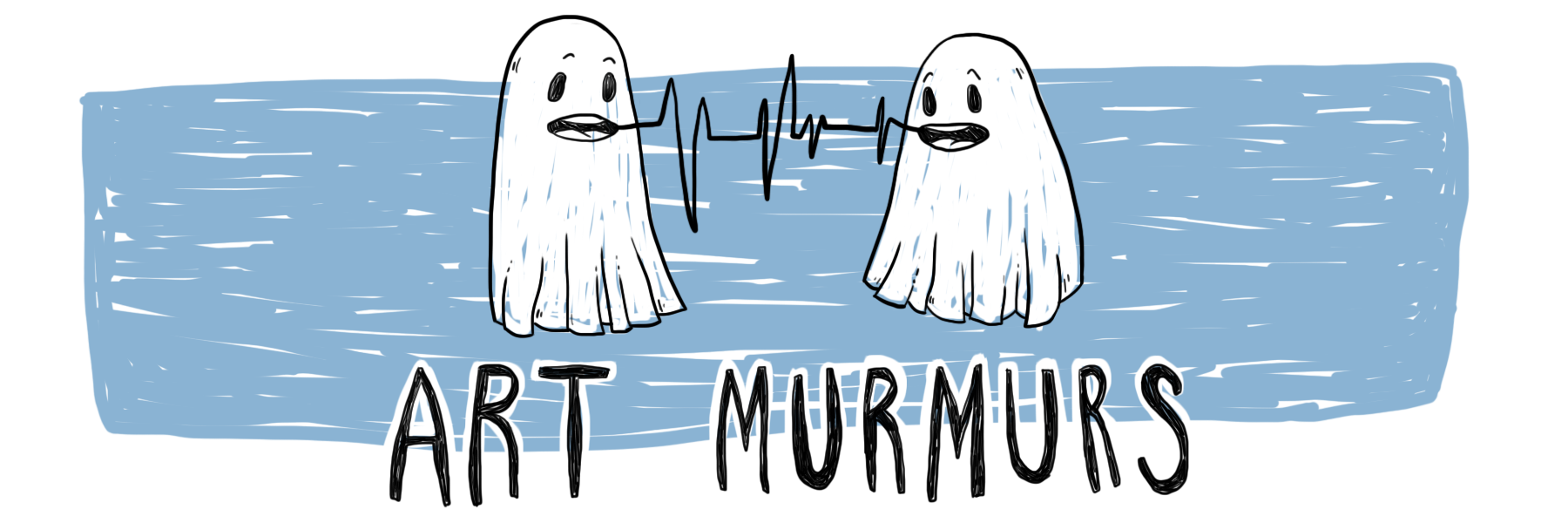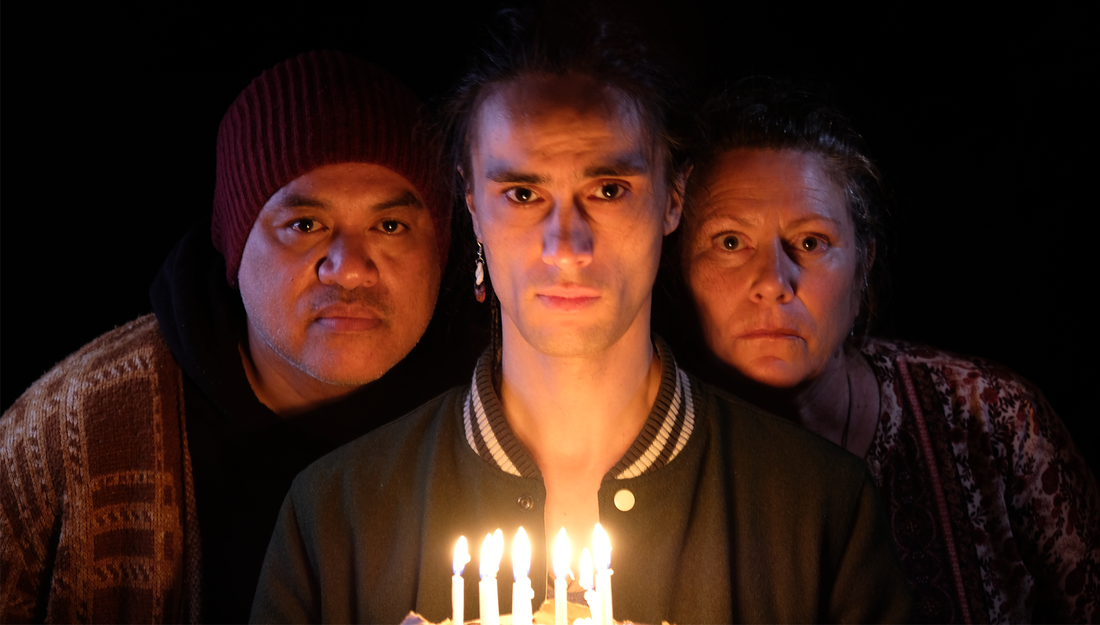Corey Spence
The show begins in Circa Two and we’re introduced to the houseland of Kiri (Julie Edwards) and Rangi (Tainui Tukiwaho), wife and husband (most often referred to by each other as “mum” and “dad”). It’s a stormy evening, 7:30pm. The first few minutes, we sit in silence, watching Kiri dote over a vacant Rangi, tending to him, but also having moments of sudden physical distress and ‘shakes’, suggesting that there is also something amiss within her. There’s incredible power and focus in how Edwards and Tukiwaho hold silence, every physical action has our utmost attention as we try to decipher what we are viewing. All we’re told by Kiri at the beginning is that we're waiting for 8:30pm (within the play and our actual time too) and that we’re celebrating the birthday of a person who doesn’t seem present. It isn’t long before Hihi (Joe Dekkers-Reihana) and Kate (Tuakoi Ohia) crash the party, breaking into their home and trying to rob the couple. They’re given a unique proposition to stay with the couple for the evening, prompted by Hihi’s surprising resemblance to the elderly couple’s late son. The strange, weaving narratives that ensue are as satisfying as they are heartfelt and tearful.
Every aspect of this production is stunning, but I have to pay immediate attention to the phenomenal talent among the tight-knit cast. Edwards is a treat of a performer. Her body language is precise, communicating love, loss, regret, and resentment as her character navigates mixed feelings about her husband’s condition, the memory of their son, and the sudden invasion of her home. Edwards provides a wistful quality to Kiri that shines most when she recounts stories and memories, and it feels true-to-life, like when our grandparents share stories and times gone by. The titular pūrākau is a personal favourite, with one comment feeling particularly haunting: “Don’t be the wind, dear”. We mostly receive vacant stares and silence from Tukiwaho’s Rangi for the beginning of the play; he sits in this passivity well, never wavering, and it makes us eager to see how he will come to life later on. His character is a concoction of humour, relief, and immense sadness, and his presence on stage is felt powerfully, no matter which of these emotions Rangi is channelling.
Tuakoi’s Kate often sits an uncomfortable and concerned outsider, weirded out by how her boyfriend seems to be the missing piece to the old couple’s familial puzzle. Her character often sits in frustration, given that she is relying on a promise of payment to care for an unborn child as Hihi has lost his job, but there’s an unrelenting tenderness that moves through her body when Hihi crumbles, making the pair work exceptionally well together. It was an incredibly visceral and gratifying experience to watch Dekkers-Reihana perform. He has such immense control over his body and emotional extremities that, particularly in moments where Hihi is most distressed like him curling at his faux-father’s feet, or tears streaming about his orphaned upbringing, or his spitting venom at Kate during early-evening arguments, you just can’t look away. Watching the four of them perform separately, and together, is an emotional feast.
Tainui Tukiwaho also spearheads the set design. It is simple and realistic, and a highly effective use of split staging, where action can take place in two rooms of Kiri and Rangi’s home simultaneously. The dining area holds a rug and small table with four chairs, while the kitchen is denoted with a circular patch of black-and-white linoleum. Aided by Katrina Chandra’s lighting design, the kitchen is often bathed in blue, while warm amber tones typically flood the dining room. The effect is cosy and contrasting, making the family space seem more inviting. What’s more, the action never dies or becomes static when one side is in focus – the performers remain ‘on’ at all times, which makes all moments feel exceptionally well polished and keeps us in the illusion. The nature of things having multiple sides (arguments, the stage, the central narrative, the story about the Sun and the Wind) is cleverly reflected by these scenographic elements. Eve Gordon’s sound design, which laces the production with songs from Kiri and Rangi’s past. These help the two reminisce, always fondly but not always pleasantly, and eerily feel familiar to young Hihi too, creating another connection between the young man and the couple he has been observing.
The way the stories and narrative threads in The Sun and the Wind intersect is surprising; simultaneously profound and frightening, every time I figure out a new connection as the show unfolds before me, I grip the corners of my chair, desperately waiting to see the consequences. A particularly effective element of Tainui Tukiwaho’s writing is the combination of what seems like a sad familial drama in places and closer to surrealism in others. Take the contrast between the birthday dinner and how uncannily Hihi seems to reflect the son the couple lost as a prime example. Watching the silence shift to dancing, then shift to tears, then to arrive at arguments and torment, is truly gripping. The characters oscillate, sometimes gently and sometimes violently, between these extremes of what is or isn’t real, with my personal favourite moments stemming from the surreal. It requires masterful direction and writing to capture the balance between both grief-stricken and downtrodden and both alive and present.
I was completely captivated by The Sun and the Wind; tender and heartbreaking, I had some internal debriefing to accomplish before I could even sit down to write this review. And that is the mark of a stunning production. It’s also comforting to have the cast check in with their audience for tautoko at the close of the performance. This speaks to how the cast and crew want to create kōrero around sensitive ideas, and shows immense humanity as well as professionalism. While at times hard to watch and unpack, the journey of The Sun and the Wind is as cleansing as it is confronting; you are in the best possible hands. The production might dive “into the depths of despair and loss” to explore “how grief shapes our worldview”, and there are very few experiences I would dive into more readily than this one.
The Sun and the Wind is currently showing at Circa Theatre. Go. Brace yourself. But book your tickets. I implore you.






